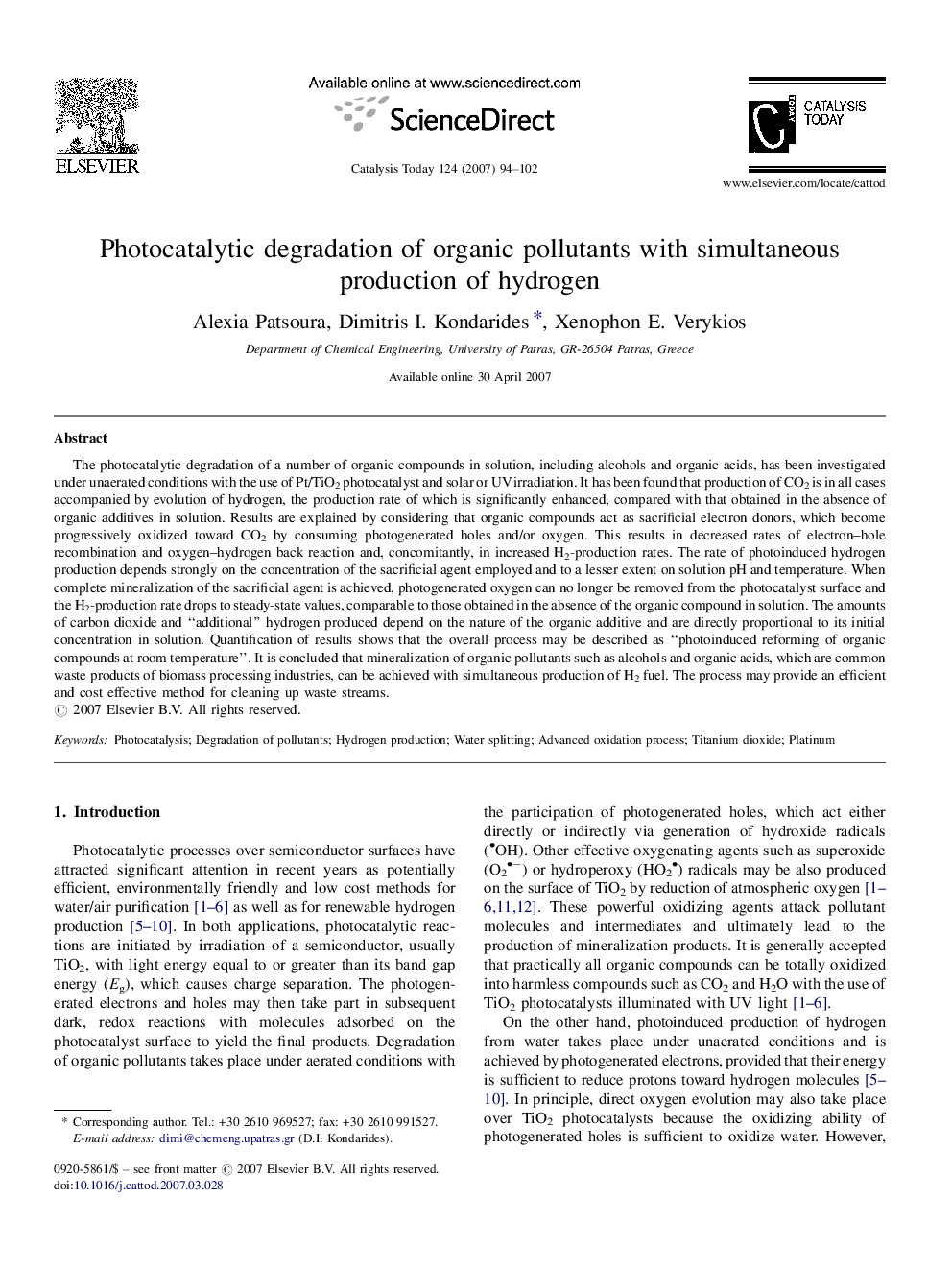| کد مقاله | کد نشریه | سال انتشار | مقاله انگلیسی | نسخه تمام متن |
|---|---|---|---|---|
| 58110 | 47142 | 2007 | 9 صفحه PDF | دانلود رایگان |

The photocatalytic degradation of a number of organic compounds in solution, including alcohols and organic acids, has been investigated under unaerated conditions with the use of Pt/TiO2 photocatalyst and solar or UV irradiation. It has been found that production of CO2 is in all cases accompanied by evolution of hydrogen, the production rate of which is significantly enhanced, compared with that obtained in the absence of organic additives in solution. Results are explained by considering that organic compounds act as sacrificial electron donors, which become progressively oxidized toward CO2 by consuming photogenerated holes and/or oxygen. This results in decreased rates of electron–hole recombination and oxygen–hydrogen back reaction and, concomitantly, in increased H2-production rates. The rate of photoinduced hydrogen production depends strongly on the concentration of the sacrificial agent employed and to a lesser extent on solution pH and temperature. When complete mineralization of the sacrificial agent is achieved, photogenerated oxygen can no longer be removed from the photocatalyst surface and the H2-production rate drops to steady-state values, comparable to those obtained in the absence of the organic compound in solution. The amounts of carbon dioxide and “additional” hydrogen produced depend on the nature of the organic additive and are directly proportional to its initial concentration in solution. Quantification of results shows that the overall process may be described as “photoinduced reforming of organic compounds at room temperature”. It is concluded that mineralization of organic pollutants such as alcohols and organic acids, which are common waste products of biomass processing industries, can be achieved with simultaneous production of H2 fuel. The process may provide an efficient and cost effective method for cleaning up waste streams.
Journal: Catalysis Today - Volume 124, Issues 3–4, 30 June 2007, Pages 94–102